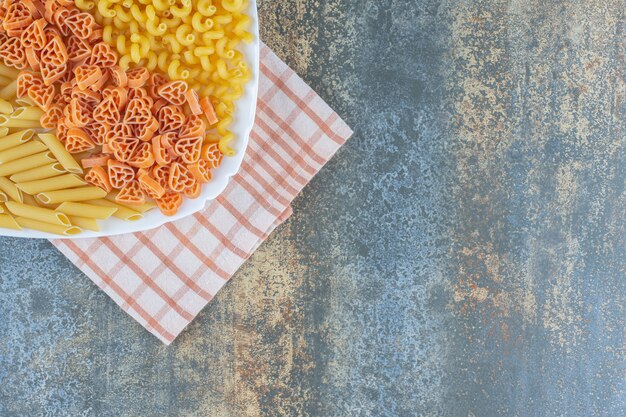How Long Does Spaghetti Really Last in the Refrigerator?
Spaghetti—a beloved staple in kitchens around the world. Whether it’s a quick dinner on a busy weeknight or the star of a leisurely Sunday meal, understanding how to store spaghetti properly can stretch your culinary creations without sacrificing taste or safety. So, how long will your spaghetti last in the refrigerator?
🍝 Keeping Your Spaghetti Fresh: The Basics
Plain cooked spaghetti stored in the refrigerator typically lasts about 3 to 5 days. The key is proper storage, which involves keeping it in an airtight container to maintain moisture and prevent it from absorbing flavors from other foods.
Why Spaghetti Storage Matters
- Safety First: Improper storage can lead to foodborne illnesses caused by bacteria like Bacillus cereus, which thrive in rice and pasta.
- Taste and Texture: Over time, spaghetti can become dry and lose its delightful texture.
- Waste Reduction: Storing spaghetti correctly reduces food waste and is more environmentally friendly.
Tips for Storing Spaghetti
Use Airtight Containers
The most effective way to preserve the taste and texture of spaghetti is by using airtight containers. This prevents the pasta from drying out and keeps other refrigerator odors at bay.
Label and Date Your Containers
Always label and date your containers. This practice helps you keep track of how long food has been stored and ensures you consume it within a safe timeframe.
Store Sauce Separately
If you plan to eat the leftovers within a couple of days, storing pasta and sauce separately is often recommended. Mixing them immediately might cause the pasta to continue absorbing the sauce, which alters its texture and flavor in unintended ways.
How to Tell if Spaghetti Has Gone Bad
Knowing when your spaghetti has gone bad is critical:
- Smell: Bad spaghetti has a sour or otherwise unpleasant odor.
- Appearance: If you notice any mold growth or significant discoloration, it’s time to discard it.
- Texture: A slimy or sticky texture is a key indication that the spaghetti is no longer good to eat.
Extending the Shelf Life
Freezing Spaghetti 🍝❄️
For longer storage, consider freezing your spaghetti. Here’s how:
- Cool it Quickly: Allow spaghetti to cool to room temperature promptly to avoid prolonged exposure to bacteria.
- Portion it Out: Divide the pasta into meal-sized portions for convenience.
- Use Freezer Bags or Containers: Store spaghetti in airtight freezer bags or containers. Squeeze out excess air to prevent freezer burn.
- Label Clearly: Label with the date so you can keep track of how long it's been frozen. Spaghetti can last up to 2 months in the freezer for optimal taste, although it remains safe beyond that.
Reheating Spaghetti Safely
Reheating spaghetti to an internal temperature of at least 165°F is crucial to eliminate any potential bacteria growth. Here are some methods:
- Stovetop: Heat in a saucepan over medium heat, adding a splash of water or broth to rehydrate the pasta.
- Microwave: Use a microwave-safe dish, covering the spaghetti with a microwave-safe lid or plate to trap moisture.
- Oven: Place the spaghetti in an oven-safe dish, cover it with foil, and heat at 350°F until hot.
Practical Storage Tips and Techniques
Invest in Quality Storage Solutions
Utilizing high-quality storage containers can greatly enhance the longevity and quality of stored foods. Glass or BPA-free plastic containers are durable and help preserve flavor.
Consider Meal Prepping
If you're into meal prepping, understanding how long spaghetti lasts in the refrigerator can help in planning. You might store cooked, unsauced spaghetti separately from your sauces to preserve optimal taste and texture for each component.
Keep an Organized Fridge
A tidy fridge helps in maintaining the quality of stored foods. Place newer items at the back and older ones in front so you're always using ingredients before they go bad.
Common Spaghetti Storage Mistakes to Avoid
Leaving Spaghetti Out Too Long
Never leave cooked spaghetti out of the refrigerator for more than two hours. This is the temperature danger zone where bacteria can grow rapidly.
Storing Hot Spaghetti
Refrigerate spaghetti only after it has cooled slightly. Placing hot spaghetti directly in the fridge can raise the refrigerator's internal temperature, creating an unsafe environment for all stored foods.
Summary: Key Spaghetti Storage Tips 📋
Here’s a handy bullet-point list to keep your spaghetti fresh and safe:
- 🍝 Store in airtight containers to maintain freshness and prevent odor absorption.
- 🕒 Keep refrigerated for 3 to 5 days. Label with dates to monitor freshness.
- ❄️ Freeze spaghetti if you won’t eat it within a few days.
- 🌡️ Reheat thoroughly to at least 165°F.
- 👀 Look out for bad odor, mold, or slimy texture before consuming.
By adhering to these tips, you ensure that your leftover spaghetti stays delicious and safe for consumption. Whether you're meal-prepping or simply savoring leftovers, proper storage practices are essential for both health and culinary satisfaction.
With these insights on spaghetti storage, you can enjoy this classic dish with the peace of mind that comes with safe and smart kitchen habits. Remember, a little care in storage can go a long way in maximizing both flavor and safety.
